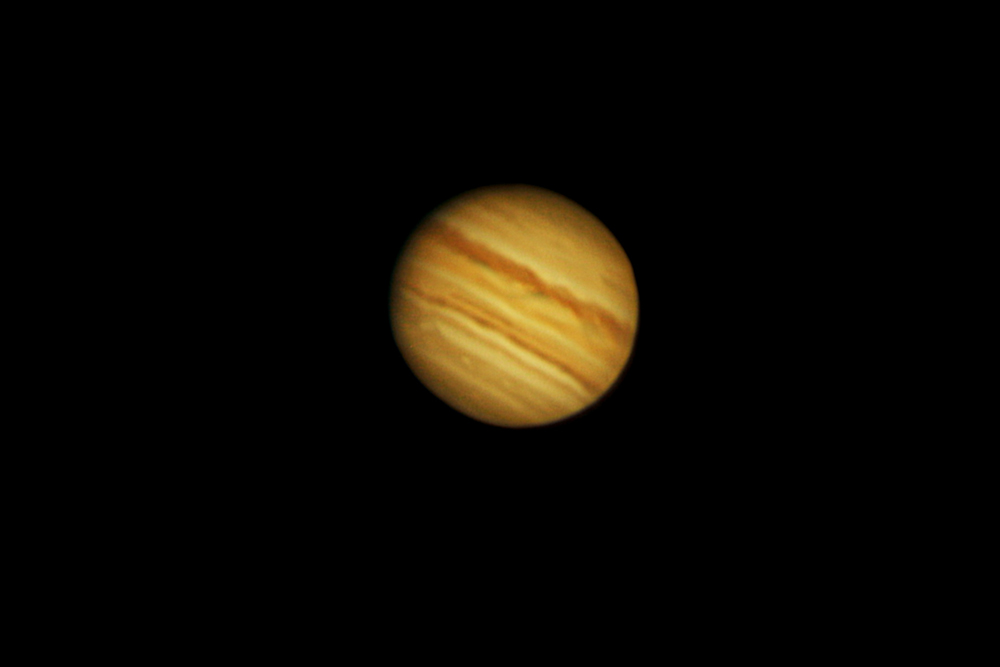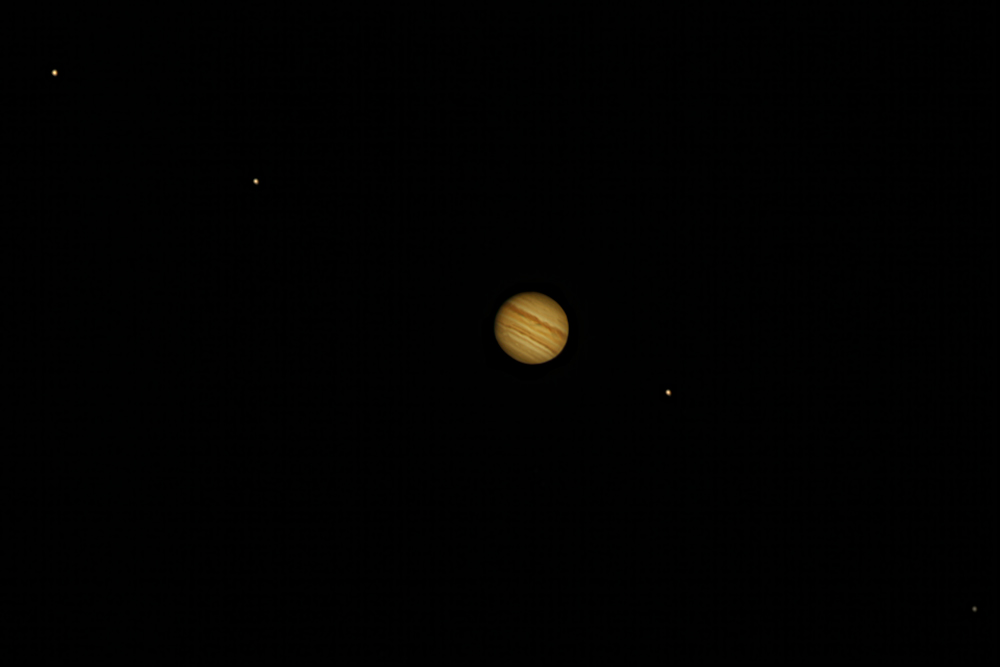
The lower image shows Jupiter's four brightest moons. From upper to lower right, the moons are Ganymede, Europa, Io, and Callisto. These four were discovered by Gallileo in 1609, and they are easy to observe in any telescope. The moons can even be observed through a good pair of binoculars if they are held steady or put on a tripod. The moons change positions from night to night, and sometimes their movement can be detected in just an hour.
